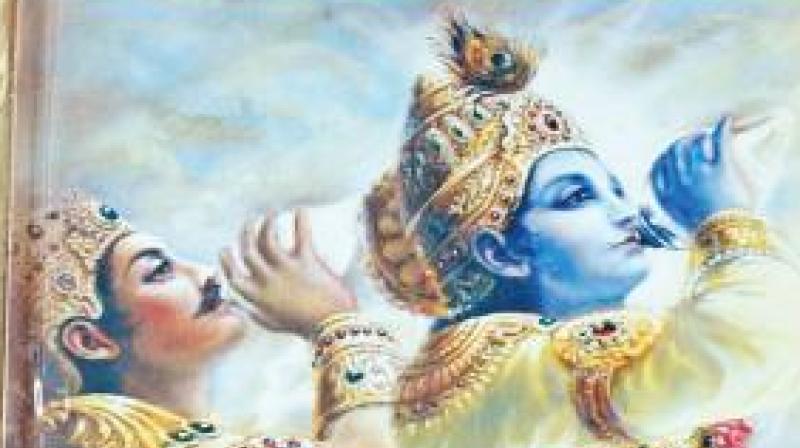Mystic Mantra: The Gita’s perspective

Among scriptures of the world, the Shrimad Bhagvad Gita holds a unique place. Presented as a dialogue between Bhagwan Shri Krishna and Arjuna on the battlefield of Kurukshetra, it was composed for the benefit of humankind by Maharshi Ved Vyasa. In 700 metrical shlokas, it contains the essence of the teachings of the Upanishads. So naturally — self-knowledge — the subject matter of the Upanishads is its main theme. Notwithstanding the fact that its content is based on the Upanishads, the Gita has a special prominence.
Simple and straightforward, the message of the Gita is: Look at life as a whole and live a whole life. Don’t live it in fragments. Don’t live it partially. Don’t look at life only from one angle; take an aerial view. Flying in a helicopter one gets the larger perspective, the overall picture. As the craft descends, we can individually view each corner, look in every direction. This is exactly what Shri Krishna did for Arjuna. He suddenly lifted him to a great height and made him observe the situation from the highest standpoint. Then He came down to the ground realities and explained the different perspectives of life from various levels. He taught him how to examine the impending war from the absolute standpoint as well as from the many relative standpoints. A study of the Bhagvad Gita deals with the perennial dilemma that faces humankind — how to make the right choice?
To facilitate an easy understanding of this multi-dimensional text, its content can be addressed under four heads:
Part I — In Sync with Totality: The total panorama — a holistic vision of life dictates our decisions on all issues. How to deal with a topical problem? How to respond to insult or praise? How to deal with grief?
Part II — Cohesive Life Management: Application of principles — how to live in this world? What is action? How to act? Which actions to perform and the attitude to perform them with?
Part III — Values to Enhance Life: An in-depth analysis of values — a comparative study of divine virtues and demonic vices that respectively lead to liberation and strengthen our bondage.
Part IV — The Man of Enlightenment: The realised master — the one who has without doubt understood the vision of life, philosophy of action and value systems sees the complete panorama, is ever liberated — a person of wisdom and enlightenment.
The Gita provides invaluable guidance to on how to deal with the fundamental issue of making correct choices and taking the right decisions. There can then be no easy or clear-cut solutions. If goals are self-contradictory, personal likes and dislikes interfere or if the situation is not viewed objectively, matters get complicated.
However, the clear and unclouded vision of the goal presented by the Gita outlines an easy path to follow.

